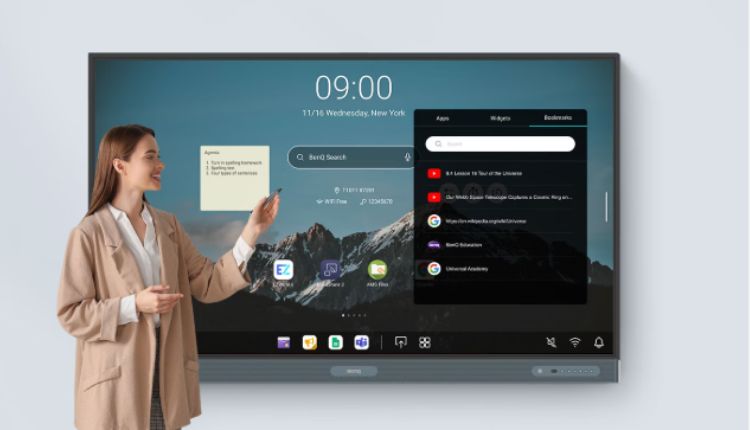Walk into a classroom or corporate meeting space today, and you’re more likely to see a sleek interactive screen mounted to the wall than a traditional whiteboard or projector. These modern tools—commonly known as smart boards—have changed the way we communicate, teach, collaborate, and present information. They’ve become staples in education and business settings, not just because they look impressive, but because they offer a better, more dynamic way to engage with content.
Smart boards are part of a growing trend toward interactive technology that emphasizes participation over passive learning. They aren’t simply a digital version of a chalkboard; they’re designed to respond to touch, integrate with apps and devices, and provide a seamless way to create and share ideas in real time. In classrooms, they support collaborative learning. In offices, they make meetings and presentations more interactive. Across industries, they bridge the gap between analog habits and digital expectations.
What Is a Smart Board?
Before diving into why they’re so widely used, it helps to define what is a smart board in practical terms. A smart board, also referred to as an interactive whiteboard, is a large touch-sensitive screen that connects to a computer and a projector (or is built with these components inside). It allows users to display content, write or draw directly on the screen, interact with software, and manipulate digital objects with either a finger or a stylus.
Unlike a standard whiteboard that requires markers and erasers, a smart board offers endless pages, multiple pen colors, and the ability to save, print, or email notes. It’s often paired with collaboration software, cloud platforms, or educational tools to support real-time sharing and engagement.
The first versions of smart boards hit the market in the early 1990s, but they’ve come a long way since then. Today’s models feature multi-touch capabilities, ultra-high-definition displays, and wireless connectivity with tablets, phones, and laptops. They’ve evolved from niche tools into mainstream assets for learning and collaboration.
Why Smart Boards Are Used in Education
One of the most widespread applications of smart boards is in schools, where they’ve redefined how lessons are delivered. Teachers no longer have to rely solely on textbooks or static PowerPoint presentations. With a smart board, they can display videos, access online content, and annotate over any screen in real time. This flexibility allows them to adapt their instruction to different learning styles—visual, auditory, and kinesthetic—on the fly.
Smart boards make learning more engaging for students. Instead of watching from their desks, students can walk up to the board and solve math problems, sort words into categories, or collaborate on a group brainstorming session. This kind of hands-on interaction not only holds attention better but also encourages active participation.
From a practical standpoint, smart boards also help teachers save time. They can prepare interactive lessons ahead of time, access them from the cloud, and reuse or adapt them for different classes. Notes made during lessons can be saved and shared, making it easier for absent students to catch up or for all students to revisit difficult material.
In special education settings, smart boards are especially powerful. They allow for personalized learning experiences that can be tailored to students with diverse needs, whether it’s through visual aids, text-to-speech tools, or simplified interfaces. The accessibility features built into many smart boards provide additional support that traditional classroom tools simply can’t match.
Business Applications and Workplace Collaboration
Beyond education, smart boards have found a solid place in offices and boardrooms. For teams that rely on brainstorming, project planning, or client presentations, smart boards offer a more interactive and flexible experience than a standard projector or whiteboard.
In meetings, a presenter can display reports, annotate over spreadsheets, or diagram out a process live while colleagues contribute from their seats—or remote locations. This interactivity shortens feedback loops and improves understanding, particularly in teams that are working across time zones or departments.
Smart boards also pair well with productivity tools like Microsoft Teams, Zoom, or Google Workspace. Content can be dragged and dropped directly from web browsers or apps, and changes are saved automatically. In industries like architecture, engineering, marketing, and healthcare, where visual information and collaborative review are critical, smart boards serve as a natural hub for planning and problem-solving.
In training sessions, they enhance delivery by providing a more immersive experience. Trainers can switch between slides, videos, live demos, and drawing tools without ever leaving the board. This creates a smoother and more adaptable learning environment, which is especially valuable for onboarding new employees or rolling out complex initiatives.
Smart Boards as a Tool for Engagement
Perhaps one of the most compelling reasons for the continued rise of smart boards is their ability to boost engagement. People—whether they’re students, employees, or clients—respond better when they can interact with information directly. Tapping a screen, moving items, or adding notes helps make abstract ideas more concrete.
The touchscreen format feels intuitive, especially to younger generations who grew up with tablets and smartphones. Smart boards meet users where they already are in terms of digital fluency, reducing the learning curve and encouraging exploration. This is particularly important in educational settings, where engagement often translates directly to improved learning outcomes.
From an administrative perspective, smart boards also support sustainability and cost-efficiency over time. Instead of constantly replacing markers, erasers, and flip charts, everything is digital. Files are easy to store, duplicate, and distribute without printing. Over the long term, this shift toward paperless collaboration saves money and simplifies information sharing.
Conclusion: Smart Boards Are Here to Stay
Technology changes fast, but smart boards have proven they’re more than a passing trend. They’ve earned their place in classrooms and offices because they solve real problems—making lessons more interactive, meetings more productive, and collaboration more effective. As the tools continue to evolve, with better software integration and improved hardware, their role will likely only grow.
Whether you’re an educator trying to reach a diverse group of learners or a team leader managing remote collaboration, smart boards provide a flexible, engaging way to connect people with content. And in today’s world, where communication and adaptability are more important than ever, that kind of tool isn’t just helpful—it’s essential.






